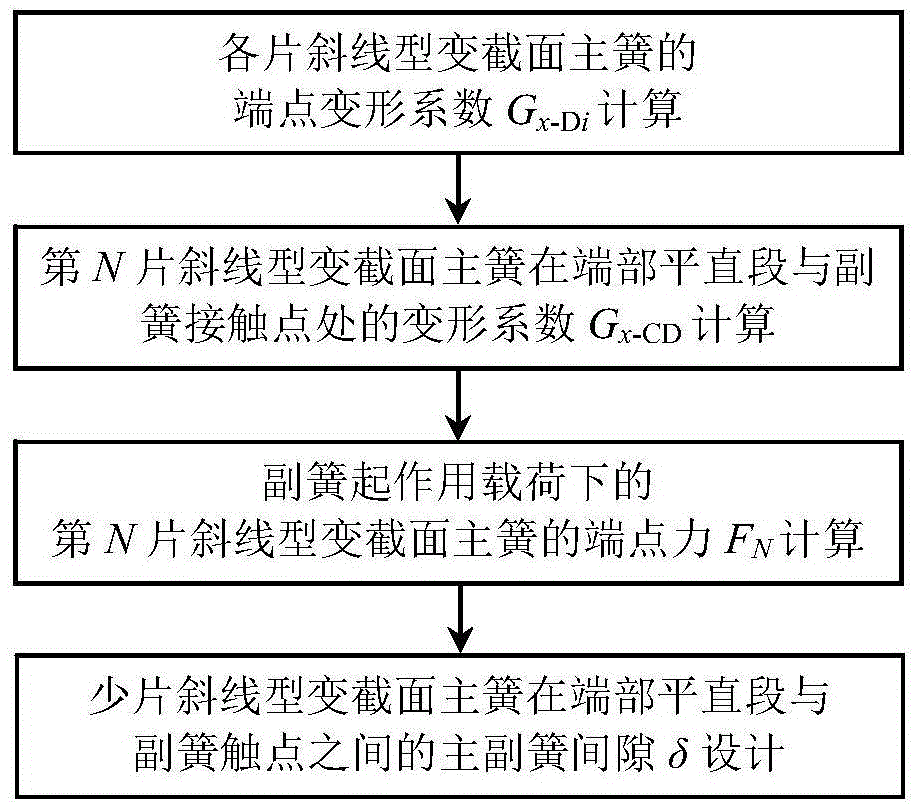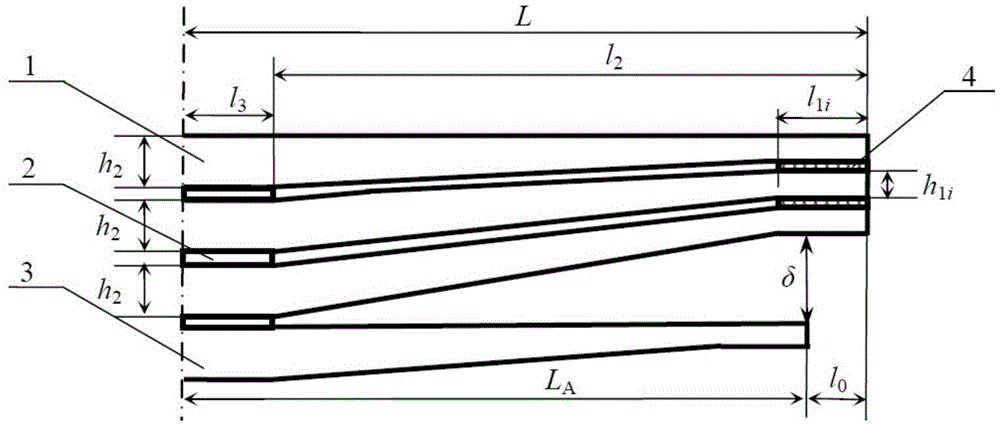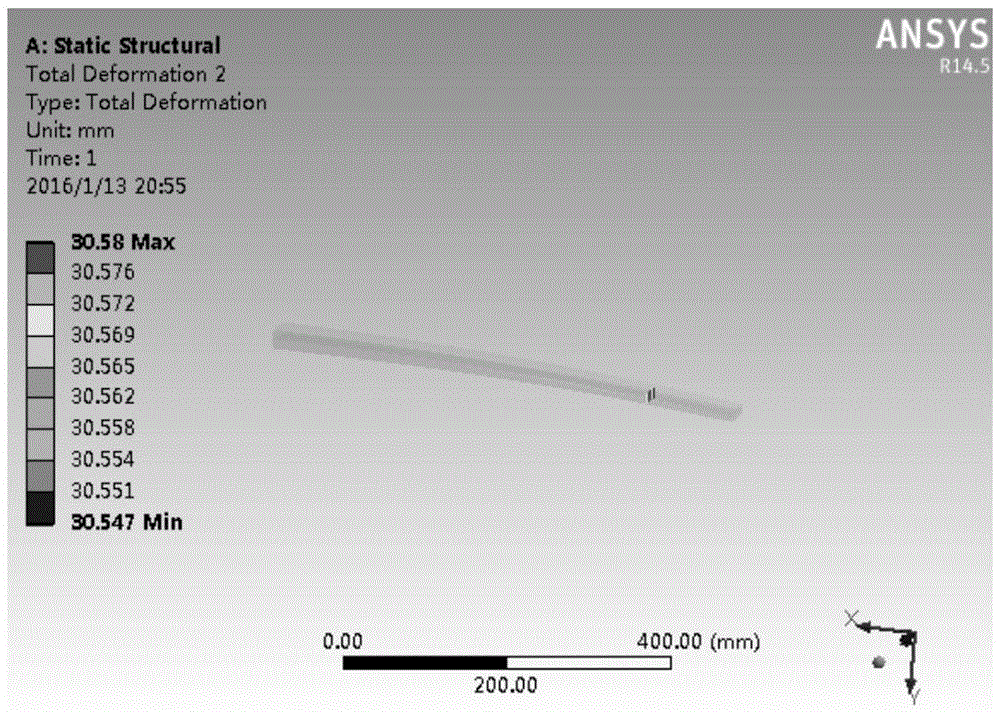Method for designing gaps of end straight sections of diagonal few-leaf main springs and auxiliary springs
A straight section, slanted line technology, which is applied to the gap between the straight section at the end and the secondary spring of the slanted few-leaf main spring. Design requirements for linear variable cross-section leaf springs, etc.
- Summary
- Abstract
- Description
- Claims
- Application Information
AI Technical Summary
Problems solved by technology
Method used
Image
Examples
Embodiment 1
[0032] Example 1: The number of pieces of a few slash-type variable cross-section main springs is N=2, wherein, the half length of each piece of main spring is L=575mm, the width b=60mm, the elastic modulus E=200GPa, the straight section of the root thickness h 2 =11mm, half of the installation distance l 3 =55mm, the distance l from the root of the oblique line segment to the end point of the main spring 2 =L-l 3 =520mm; thickness h of the flat end section of the first main spring 11 =7mm, that is, the thickness ratio β of the oblique line segment of the first leaf main spring 1 =h 11 / h 2 =0.64, the thickness h of the flat end section of the second main spring 12 =6mm, that is, the thickness ratio β of the oblique line segment of the second main spring 2 =h 12 / h 2 =0.55; half the length L of the auxiliary spring A =465mm, the horizontal distance l between the secondary spring contact and the main spring end point 0 =L-L A =110mm, the contact point of the auxilia...
Embodiment 2
[0052] Example 2: The number of pieces of a few slash-type variable cross-section main springs is N=2, wherein, the half length of each piece of main spring is L=600mm, the width b=60mm, the elastic modulus E=200GPa, the straight section of the root thickness h 2 =14mm, half of the installation distance l 3 =60mm, the distance l from the root of the oblique line segment to the end point of the main spring 2 =L-l 3 =540mm; thickness h of the flat end section of the first main spring 11 =9mm, that is, the thickness ratio β of the oblique line segment of the first leaf main spring 1 =h 11 / h 2 =0.64; thickness h of the flat end section of the second main spring 12 =8mm, that is, the thickness ratio β of the oblique line segment of the second leaf main spring 2 =h 12 / h 2 =0.57; half the length L of the auxiliary spring A =510mm, the horizontal distance l between the auxiliary spring contact and the main spring end point 0 =L-L A =90mm, the auxiliary spring contact is ...
PUM
| Property | Measurement | Unit |
|---|---|---|
| Length | aaaaa | aaaaa |
| Width | aaaaa | aaaaa |
| Elastic modulus | aaaaa | aaaaa |
Abstract
Description
Claims
Application Information
 Login to View More
Login to View More - R&D
- Intellectual Property
- Life Sciences
- Materials
- Tech Scout
- Unparalleled Data Quality
- Higher Quality Content
- 60% Fewer Hallucinations
Browse by: Latest US Patents, China's latest patents, Technical Efficacy Thesaurus, Application Domain, Technology Topic, Popular Technical Reports.
© 2025 PatSnap. All rights reserved.Legal|Privacy policy|Modern Slavery Act Transparency Statement|Sitemap|About US| Contact US: help@patsnap.com



